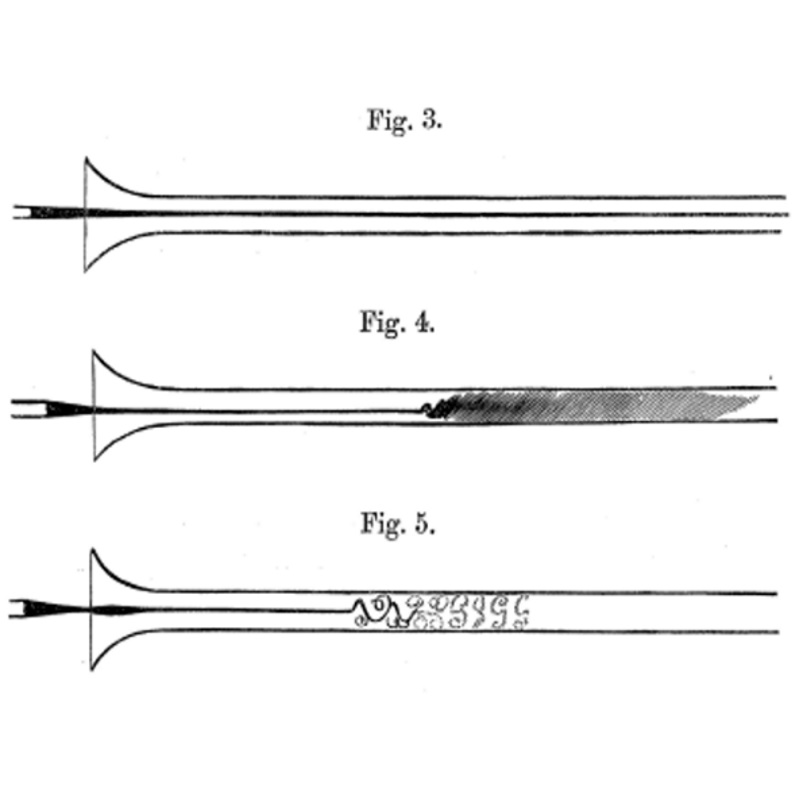To celebrate 350 years of scientific publishing, we are inviting our readers to tell us about their favourite papers from the Royal Society archive. Today P Henrik Alfredsson, Professor in Fluid Physics at the Royal Institute of Technology, Sweden, tells us about Osborne Reynolds’ drawings showing fluid flow.

“When the velocities were sufficiently low, the streak of colour extended in a beautiful straight line through the tube…”
With this sentence and an accompanying drawing, Osborne Reynolds describes laminar water flow in a pipe in an almost poetic manner. He continues through two more drawings to describe what happens when the velocity increases, namely how the flow becomes “sinous” or, as we would call it today, “turbulent”. Reynolds was also able to show that a non-dimensional number, involving the product of the water density, its bulk velocity in the pipe and the pipe diameter, divided by the dynamic viscosity of water, determines if the flow can become turbulent, a number that today is known as the Reynolds’ number. One may say that the paper is at the dawn of fluid mechanics as a modern science and is the basis for almost all research in fluid mechanics, whether in technical or natural situations, as for instance in aeronautics or flow of blood in our arteries. The drawings produced by Reynolds are reproduced in many textbooks on fluid mechanics and have been a source of inspiration both for students and scientists when trying to visualize flow phenomena in their experiments or simulations.
Another paper by Osborne Reynolds, ‘On the dynamical theory of incompressible viscous fluids and the determination of the criterion’, is discussed in the anniversary issue of Philosophical Transactions A.
